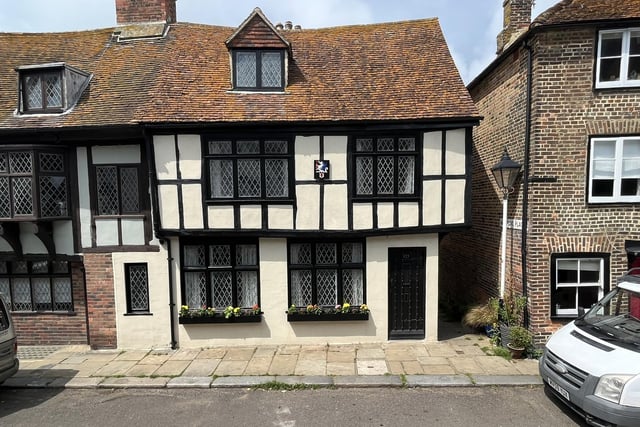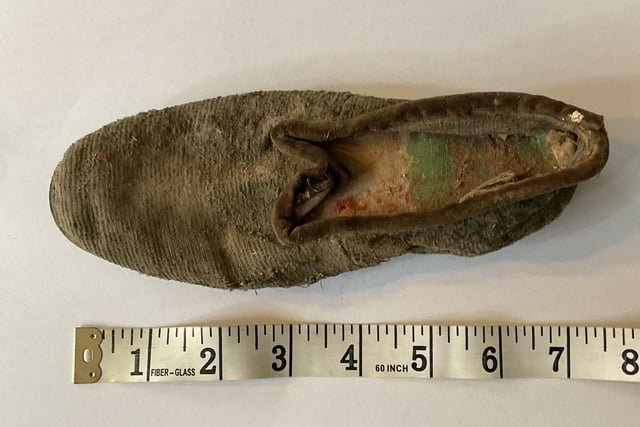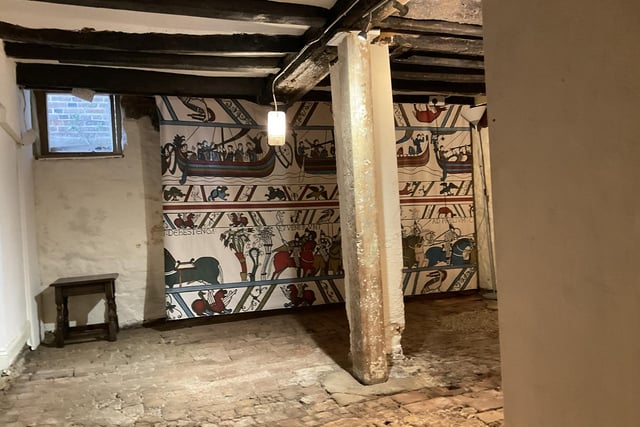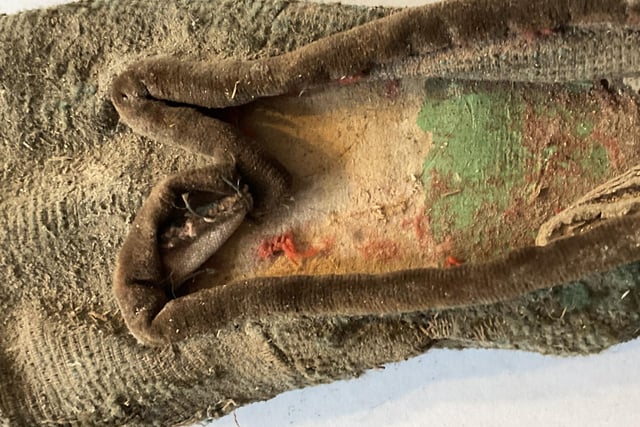A shoe was uncovered in the All Saints Street house that would have been worn by a young girl in the 18th century and may have been concealed a a good luck charm.
Home owner Dr Graeme Davis had the find verified by the Northampton Shoe Museum. He said: “The concealed shoe was found during recent work putting a proper lintel above a little window in my cellar in All Saints Street. It was spotted by keen-eyed builders Alex Town and Lotte Cooper of West Hill Renovations. It was presumably originally placed in a hidey-hole, once accessed through the living room floor boards, though subsequent building work had sealed it in.”
The half-timbered house was built in 1648 and its cellar may even be older.
Rebecca Shawcross, Senior Shoe Curator at the museum, said: “This is a slipper. Style wise it is called an Albert slipper. It has a velvet top edge and looks to me like it is make from canvas and which was once covered in a wool or Berlin wool work design. This has now perished just leaving the plain and colourless canvas and tufty bits of the wool. It has a leather sole. At 8 inches it’s about a size 5. I would say a women’s example. I would say you slipper is later and around the 1870s. Given the decoration that would have been on it I would say middle class. A comfortable shoe to slip in to after wearing boots all day. It is an indoor shoe not to be worn outdoors.”
Dr Davies said: “There is very little understanding of why single shoes were often concealed in houses but it was a widespread practice, particularly common in the nineteenth century. It is likely they were considered to bring luck to the house. There may be a link with the practice of trying a shoe behind a bride and groom’s wedding car.
"The nature of the shoe indicates that the house, and no doubt many other houses on the road, were middle class homes. My property was then both a home and a grocer’s shop. From 1875 it was the home and business of John and Mary Butler. Possibly the shoe may have been placed by the Butlers, for good luck in their new home. The Butlers moved a few years later to a shop in George Street, Hastings, and the family still trade as Butler’s’ Emporium.”
Rebecca Shawcross added: “In the 1950s Miss June Swann, former Keeper of the Boot and Shoe Collection at Northampton Museum and Art Gallery noticed that footwear was being regularly brought in for both identification and donation that had been found in unusual locations within buildings. Locations included up chimneys, within roof spaces and walls and under floorboards. It was happening too frequently for it to be ignored so to try to explain why shoes should be found in non-accidental locations she began to record all finds to gather the data to try to eventually explain this phenomenon.
"There have been many theories over the years about why shoes were deliberately hidden. One is that they are very personal items and when well-worn contain it was thought the essence of the wearer. Infused with the good spirit of the wearer, once hidden in a perceived weak spot in the house – above doors and windows, in the roof space and in chimneys - the good spirit would help ward off any evil spirits that might try and harm the house or its occupants.
"Current thinking suggests thinking less that they were specifically items that have the power to avert evil influences or bad luck – and that they were connected to notions of good luck and hope. If a child’s shoe is found in a master bedroom it could be a symbol of fertility, wishing the couple lots of children.”
Dr Davies plans to display the shoe in a frame close to where it was found.
Have you read? Take a look inside period cottage for sale in one of the most photographed streets of a pretty Sussex town

1. Hidden find at historic house
The house dates back to the 17th century. Photo: supplied

2. Hidden find at historic house
The shoe is said to be that of a young woman Photo: supplied

3. Hidden find at historic house
Cellar where the shoe was discovered Photo: supplied

4. Hidden find at historic house
Detail of the shoe Photo: supplied